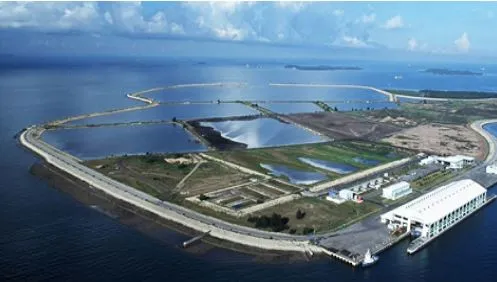
This Singapore island project could spark Southeast Asia's microgrid potential
ENGIE will be creating a test site for a 2.8MW microgrid.
When visiting Singapore’s Semakau Island, located nine kilometers south of the mainland, one will find not only a landfill site but also a landmark project that could fast-track microgrid development and adoption in Southeast Asia.
ENGIE has partnered with Schneider Electric and Nanyang Technological University in Singapore to create a test site for a 2.8MW microgrid to come online in 2018. Called the Renewable Energy Integration Demonstrator in Singapore, or REIDS, the Semakau project aims to develop a microgrid demonstrator that could improve energy access in off-grid areas and islands. It does this through an integration of various renewable sources - solar PV, wind, natural gas, diesel and li-ion battery - and storage systems.
The success of REIDS will validate the value proposition of microgrids in Southeast Asia, a potential major market due to its higher population density and numerous island communities, said Peter Asmus, principal research analyst at Navigant Research.
Asmus explained that REIDS has one primary technological breakthrough: An algorithm for a virtual synchronous generator allowing for 100% renewable supply when sufficient renewable fuels are available.
"This microgrid is capable of running at 100% renewable energy," he said. "It can make the most of available resources, and then transform your waste into free energy with biogas, which can be used for cooking, electrical production, and biofuel for mobility.”
If the REID project proves successful, ENGIE will use it as a model to roll out similar microgrids across Southeast Asia.
Recognising the increasing financial and operational viability of microgrids as well as the need of developing countries to find alternatives to on-grid systems, Navigant Research forecasts the market for remote microgrids and nanogrids to exceed $25b by 2024. As of the first half of the year, Asia Pacific was the leader in total microgrid power capacity market share by region at 42%, followed by North America at 40%, Europe at 10%, and Latin America and Middle East & Africa at 4% each.
“If you look at all the different opportunities in the developing world, the most financially attractive opportunity, in general, are going to be a physical island,” said Asmus. “Islands are generally often of sufficient scale to make economic sense, and there is often a single utility.”
Another trend shoring up support for microgrids is global climate change-related extreme weather events, as seen in what happened in disaster-struck Puerto Rico. Asmus reckoned rebuilding efforts could essentially start on a clean slate and focus on microgrids rather traditional grid infrastructure.
Asmus echoed this assessment, warning that if the developing world, which includes most of the countries in Southeast Asia, follows the same pathway of developed countries, emissions would skyrocket and result in a high damage on the economy and environment. This is where microgrids will play a vital role in meeting global goals on sustainability, economic development and climate change mitigation.
The Singapore Economic Development Board, or EDB, has been supporting the project in the hopes that the country will become a regional hub for the development and commercialisation of microgrid technologies. ENGIE, for its part, has already set up a research lab in the city-state last year.
“The rapid urbanization in Asia is accelerating the need for smart and sustainable urban solutions,” said Yeoh Keat Chuan, managing director of EDB, in a release announcing REIDS.
But while Southeast Asia is starting to gain access to key microgrid technologies, Asmus reckoned long-term sustainability will depend more on finding smarter business models than slapping on systems with the most cutting-edge science.
"You do not want to have the most sophisticated system necessarily if there is no local labor that might understand the technology and be able to keep it operating," he said, citing companies such as SparkMeter and PowerHive that seem to have figured out how to combine new technology with innovative business models.



















 Advertise
Advertise







